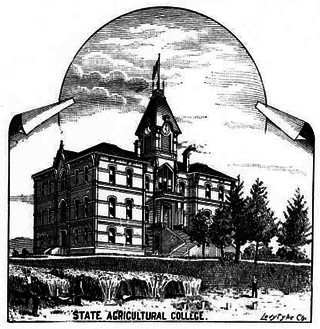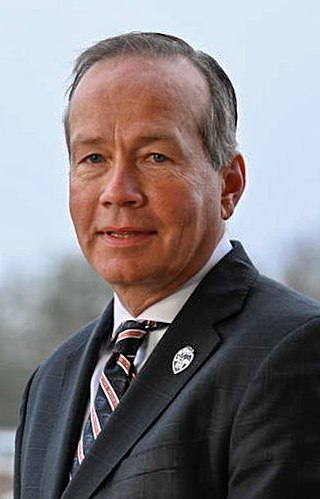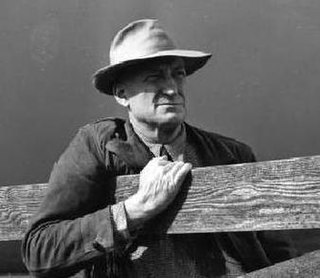
Oregon State University (OSU) is a public land-grant research university based in Corvallis, Oregon. OSU offers more than 200 undergraduate-degree programs along with a variety of graduate and doctoral degrees. It has the seventh-largest engineering college in the nation for 2023. Undergraduate enrollment for all colleges combined averages over 32,000 while an additional 5,000 students are engaged in post-graduate coursework through the university. In 2023, over 37,000 students were enrolled at OSU - making it the largest university in the state. Out-of-state students typically make up over one-quarter of the student body. Since its founding, over 272,000 students have graduated from OSU. It is classified among "R1: Doctoral Universities – Very high research activity".

Gill Coliseum is a multi-purpose indoor arena in the northwest United States, located on the campus of Oregon State University in Corvallis, Oregon. Opened in December 1949, the arena currently lists a seating capacity of 9,301 and is home to the Oregon State Beavers' basketball, wrestling, volleyball, and gymnastics teams. It is named after Amory T. "Slats" Gill, the Beavers' basketball coach for 36 seasons, who compiled a 599–392 (.604) record.

"Hail to Old OSU" is the fight song of Oregon State University. It is extracted from a song written by Harold A. Wilkins in 1914 and is played mainly at sporting events like football and basketball games. The lyrics have been slightly altered since being written "to conform to a changing culture", changing to conform to new initials, and the use of a more gender-neutral version.

The history of Oregon State University in Corvallis, Oregon, United States, began in the era of the Oregon Territory. At first a private school, the college later became a state supported agricultural institution. Nineteen presidents have led the school over the years while the school has been transformed from a single building to a campus of 577 acres (2.34 km2) and approximately 30,000 students in 2015.

Fieldon King Alexander is an American former university administrator and professor of higher education policy and finance. He was the president of Oregon State University, Louisiana State University, California State University, Long Beach, and Murray State University. He resigned from his most recent position as President of Oregon State University in 2021 after a faculty vote of no-confidence.

Edwin Russell (E.R.) Jackman was an American agricultural expert from Oregon. He helped form the Oregon Seed Growers' League and the Oregon Wheat League. In 1964, he joined Reub Long to write The Oregon Desert, which is still a very popular book fifty years after its original publication. Jackman's professional papers and photograph collection are maintained in the Oregon State University archives.

Bell Field, originally known as College Field (1893–1909), was an outdoor athletic stadium in the northwest United States, on the campus of Oregon State College in Corvallis, Oregon. It was the home venue of Oregon State Beavers football prior to the opening of Parker Stadium in November 1953. Track and field continued at Bell Field until its demolition in 1974.
Te-Tzu Chang or T. T. Chang was a prominent Chinese agricultural and environmental scientist.
The National Clonal Germplasm Repository is a branch of the Agricultural Research Service research agency of the United States Department of Agriculture (USDA). The Repository is a gene bank that preserves genetic resources by various means, including cryopreservation. There are nine clonal repositories located in appropriate locations throughout the United States. Germplasm of citrus plants and dates are preserved in Riverside, California, a distribution center for grapes, temperate fruit, walnut, almond and pistachio nuts is located in Davis, California, and the repository for temperate small fruit, berries, pears, hazelnut, butternut and specialty crops is located in Corvallis, Oregon. The base gene bank for the USDA National Germplasm System is the National Center for Germplasm Preservation at Ft. Collins, CO. This center holds seeds of agronomic crops, cryopreserved clonal plant materials, animal, and bacterial germplasm.

Burdette "Bob" Glenn was an American baseball player and pioneer in the field of highway engineering.
The Hyslop Field Research Laboratory is an agricultural research facility operated by the Oregon State University Crop and Soil Science Department. Also known as The Hyslop Farm, it is located on Highway 20 about half way between Corvallis and Albany, Oregon.

The Oregon State University Foundation is an American private nonprofit corporation associated with Oregon State University in Corvallis, Oregon. The OSU Foundation is governed by a volunteer Board of Trustees.
Robert William MacVicar (1918–1998) was an American chemist and academic administrator who served as the chancellor of Southern Illinois University, and the 11th president of Oregon State University from 1970 and 1984.

Oregon State University's College of Liberal Arts is a liberal arts college at Oregon State University, a public research university. Based in Corvallis, Oregon, on the OSU campus, the college of liberal arts is the second largest of the 12 colleges at the university and offers 66 academic programs. The college awarded just over a thousand undergraduate degrees in 2023, the second most of all OSU colleges.
Dominique Bachelet is a senior climate change scientist and associate professor in Oregon State University, with over 38 years of education and work in the fields of climate change, fire, and ecology. She has worked to make science more accessible, by creating web based resources with various scientific organizations. She returned to Oregon State University in 2017 but has continued her outreach work, getting valuable information to students, scientists, and scholars.

Rosalind Wulzen was an American physiologist, known for her discovery of the "Anti-Stiffness Factor," or "Wulzen Factor." Born in Oakland, California, Wulzen attended the University of California Berkeley for her bachelor's, master's, and doctoral degrees.
Lois Sather McGill (1923-1995) was a professor in the Department of Food Sciences and Technology at Oregon State University. She was hired to establish the sensory evaluation program in 1945; she was the first female faculty member in the Department of Food Science and Technology. When she retired, the university granted her Emeritus Professor status.
Joan Kilbourn was an American microbiologist and educator.










